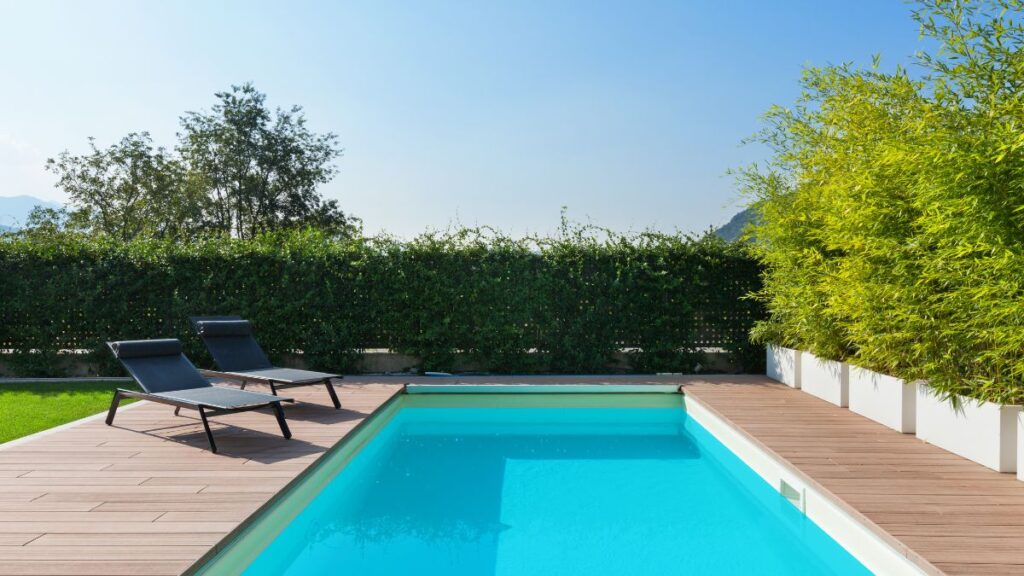If you’re a homeowner in East County San Diego—especially in El Cajon—chances are your backyard pool is one of your favorite features. But even the most well-maintained pools eventually need replastering. Knowing when to replaster can make the difference between a smooth, hassle-free job and an inconvenient, drawn-out project.
At San Diego Pool Tech, we specialize in Pool Replastering East County San Diego, and we’ve helped hundreds of homeowners choose the right timing for their project. Let’s walk through the factors that determine the best season for replastering and why scheduling matters.
Why Timing Matters for Pool Replastering
Replastering a pool is a major investment in both time and money. The process involves draining your pool, removing or repairing damaged plaster, applying the new finish, and refilling the pool. Weather, temperature, and scheduling availability all play a role in how smoothly the project goes.
The main reasons timing matters include:
- Optimal curing conditions for new plaster.
- Reduced downtime so your pool is out of service for less time.
- Avoiding peak season delays when pool contractors are busiest.
Understanding the San Diego Climate for Pool Work
San Diego is known for its mild, sunny weather, but there are still seasonal variations that affect pool work.
- Winter (Dec–Feb): Cooler temperatures, occasional rain, less demand for pool use.
- Spring (Mar–May): Mild weather, increasing demand for pool services as homeowners prep for summer.
- Summer (Jun–Aug): Hot, dry conditions but peak usage time—less ideal for having your pool out of service.
- Fall (Sep–Nov): Warm days, cooler nights, and lower demand for pool work.
The Best Time of Year for Pool Replastering in East County San Diego
Based on our years of experience with pool resurfacing El Cajon and surrounding areas, the ideal time for replastering is late fall through early spring—specifically October through April.
Here’s why:
- Mild Temperatures – New plaster cures best in moderate weather (ideally 50–85°F).
- Lower Contractor Demand – You’ll have more scheduling flexibility and may even find off-season pricing.
- Less Pool Usage – You won’t miss out on prime swimming season.
- Faster Project Completion – Crews are more readily available, reducing delays.
Why Avoid Peak Summer for Replastering
While summer weather is good for drying plaster, it’s also the busiest time for pool use. Scheduling work then means you’ll lose valuable swimming days. Additionally, pool companies are in high demand, and wait times can stretch weeks longer than in the off-season.
How to Prepare for Pool Replastering
Whether you choose fall, winter, or early spring for your San Diego pool plaster repair, preparation is key.
Steps to prepare include:
- Plan ahead: Schedule at least a month in advance.
- Decide on finish: Choose between traditional white plaster, quartz plaster, or pebble finish.
- Arrange for water drainage: Your contractor will manage this, but ensure your property is ready.
- Budget for downtime: Your pool will be out of service for 1–2 weeks.
Choosing the Right Finish
One of the best parts of replastering is the opportunity to upgrade your pool’s look and durability.
Popular options include:
- White Plaster: Classic, smooth, and cost-effective.
- Quartz Finish: Durable, with richer color and better stain resistance.
- Pebble Finish: Premium texture, natural look, and long-lasting performance.
Learn more about our finishes on our Pool Finishes Page (internal link).
Why East County Homeowners Choose San Diego Pool Tech
We’re not just another contractor—we’re your local pool plastering experts. Our team has decades of combined experience serving El Cajon, La Mesa, Santee, and all of East County San Diego.
Our advantages:
- Skilled, licensed technicians.
- Premium materials and modern application methods.
- Friendly, professional service with a local touch.
- Competitive, transparent pricing.
Customer Story: Replastering in El Cajon
Last November, we helped a family in El Cajon who had been delaying their pool resurfacing for years. The plaster was stained and rough, and they wanted it ready for a big summer party. By choosing a fall schedule, we completed the work in just 10 days and had their backyard ready for the next swimming season—without the stress of summer scheduling.
FAQs About Pool Replastering
1. How often should I replaster my pool?
Most pools need replastering every 10–15 years, depending on usage, water chemistry, and maintenance habits.
2. How long does the replastering process take?
Typically 7–14 days, depending on the size of the pool, chosen finish, and weather conditions.
3. Can I swim immediately after replastering?
No. New plaster needs a curing period, usually at least 7 days with proper water balancing before safe swimming.
4. What’s the difference between replastering and resurfacing?
Replastering usually means applying a fresh layer of plaster, while resurfacing can involve other finishes such as quartz or pebble for enhanced durability and appearance.
Get Your Pool Ready for the Perfect Season
If you’re in East County San Diego and considering pool replastering, planning your project for the fall, winter, or early spring can save you time, money, and hassle. At San Diego Pool Tech, we’ll guide you through the process from start to finish, ensuring your pool looks and feels brand new.
📞 Call us today or request your free estimate online: Contact San Diego Pool Tech
External Resource:
For more information on pool maintenance and seasonal care, visit the Pool & Hot Tub Alliance.

